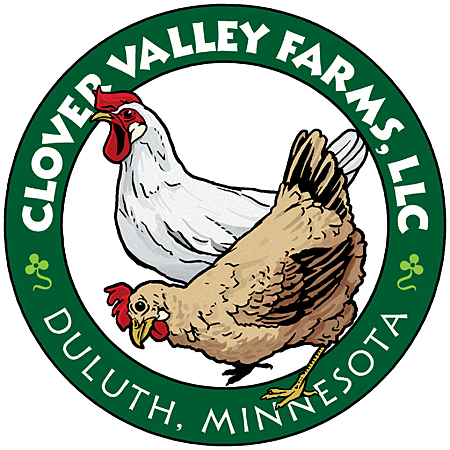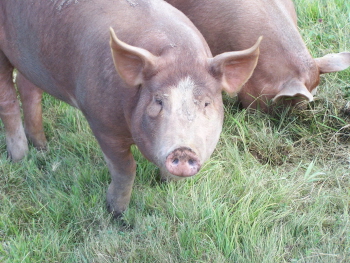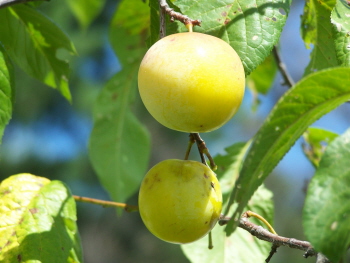Apples & Other Fruits
Integrated Pest Management
Jeff and Cindy use integrated pest management (IPM) to manage pests in their fruit operation. As mentioned earlier, their farm’s location puts them out of range for two of the most destructive pests that plague other Minnesota growers: the plum curculio, a weevil that pierces and damages the fruit, causing it to be misshapen; and the codling moth, whose larvae burrow inside and eat their way out, leaving a hollow rotten core to the fruit. Both pests render the fruit unmarketable.
Educator’s Perspective: Resource Tip According to the Minnesota Department of Agriculture’s IPM Program, the goal of IPM is to mitigate pest damage while protecting human health, the environment, and economic viability. IPM is a stepwise approach involving proactive planning, setting thresholds for management actions, conducting ongoing monitoring for pests, properly identifying pests, implementing control actions, and evaluating effectiveness. Actions may include biological control (releasing or promoting beneficial organisms), cultural control (such as mowing, trapping, or destruction of pest habitat), chemical control (such as insect pheromones), and genetic control (use of resistant varieties). |
|
Farmer’s Perspective: Lessons Learned Cindy feels that participation in programs like the MDA’s IPM program is important for beginners. Even with her scientific background, she confesses that she would be likely to let weekly orchard monitoring slip if she hadn’t committed to the program. They now have two years of useful data from monitoring their own orchard, plus a neighbor’s orchard and the orchard at the University of Minnesota – Duluth. Cindy also feels that the process of writing proposals for, and carrying out, on-farm research has been very valuable to them. It has given them access to helpful contacts and forced them to think through questions and issues on the farm that they might not otherwise address. She encourages other beginners to explore similar opportunities, even without previous grant writing experience. |
Cindy and Jeff helped to demonstrate that they were out of range of these pests by participating in the MDA’s IPM Program. They do weekly monitoring of pest traps during the growing season and report to the MDA. Clover Valley Farms is one of two monitoring sites in St. Louis County. 
Minnesota Department of Agriculture IPM trap The primary pest for which Jeff and Cindy have needed to take action is the apple maggot, a mid- to late-summer fly that lays its eggs in the developing fruit. They use a combination of trapping and spraying with kaolin clay. Kaolin clay is a naturally occurring mineral that forms a white film that suppresses pests. The film can be removed by washing before eating the fruit. 
apple maggot trap |
They have been able to control apple scab, a fungal disease that can damage both fruit and leaves, using orchard management techniques. The fungus overwinters in leaves and wood, so by removing pruned and fallen branches, mowing, and allowing poultry to forage in the orchard, they can break the fungal life cycle. They also keep a close watch on their Honeygold apples, the “canary in the coal mine” for apple scab; it shows signs of the disease before other varieties.
 |
 |


